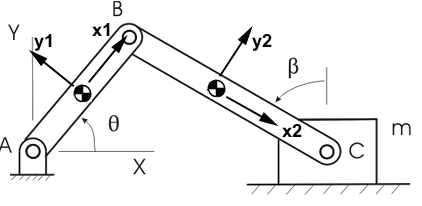Slider Crank Mechanism:
Assume θ12 be the angular displacement of crank among positions 1 and 2 and s12 be the equivalent displacement of the slider. Let θ1 be peculiarity.
(a) Situate relative pole R12 as explained in earlier section. Draw two parallel lines l1 and l2 with distance among them equivalent to eccentricity e. make an angle equivalent to θ12 /2 in an arbitrary point. Intersection of an arm having l2 gives position of slider. Choose point A arbitrary on other arm of angle. Join A having O2 to obtain crank and join A & B to obtain coupler. This method is illustrated in Figure (a).
(b) If three positions of crank θ1, θ2 and θ3 are known and equivalent slider positions s1, s2 and s3 are also known as, R12 & R13 might be finding out by using s12 and θ13, s13 respectively. Construct angle equivalent to θ13 /2 at R12 in an arbitrary position to situate point B that is position of slider B. Intersection of other two remaining arms locates position of A. Join O2 with A to obtain crank. Join A along B to obtain coupler AB. The construction is illustrated in Figure.
